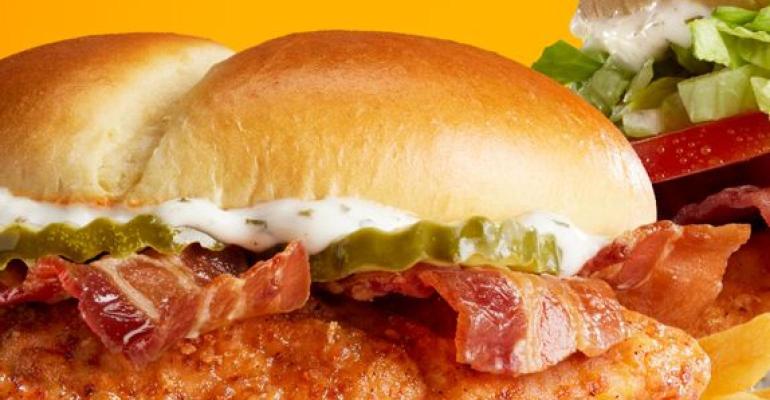The home of the Big Mac and Quarter Pounder with Cheese is starting to look and sound more and more like a chicken concept.
During McDonald’s Q3 earnings call Monday morning, executives noted that its McCrispy chicken sandwich, first launched in 2021 as the crispy chicken sandwich, is now a $1 billion global brand. Though the menu was discussed nominally on the call, chicken was the major theme when it was. CFO Ian Borden said, for instance, “Our food is at the heart of our customers’ relationship with the brand. This is why we’re taking a One McDonald’s Way approach to our menu, further fueling our chicken ambition by scaling core chicken equities.”
The idea of “scaling core chicken equities” has been manifesting since Chris Kempczinski took over as CEO shortly before the pandemic. In January 2021, he told analysts, “Developing a reputation for great chicken represents one of our highest ambitions,” and shared the company’s plan to “activate a multi-tiered strategy and holistic approaches that integrate great (chicken) products” by “rebuilding on the strength of core equities like Chicken McNuggets and McChicken sandwiches.” These comments came about a month before the launch of the now-McCrispy sandwich, which exists alongside the traditional McChicken sandwich and which has exceeded expectations, according to executives.
McDonald’s movement on chicken is a wildly different narrative from 2019. On the company’s Q3 2019 call, in October of that same year, then-CEO Steve Easterbrook hinted at a loss of market share in chicken.
“We did gain hamburger share in the quarter. I think it's fair to assume with everything going on in the quarter with chicken that we did go a little bit the opposite way on chicken,” he said.
Fast forward four years and it seems like McDonald’s has found a nice cadence in the category, which is no small feat given the intensified competition that has extended well beyond traditional players like KFC, Popeyes and Chick-fil-A. On Monday, executives noted that the company has experienced “strong share gains” not only in beef, but also chicken across its global system, and this trend has been building for several quarters now. In January, Kempczinski said the company has been “gaining quite a bit of share on chicken – about a point in the last year” and added that the company has gained chicken share in all its top markets since 2019.
Chicken, he added, is a “big opportunity for us.” That’s because it’s part of McDonald’s core menu, which makes up about 75% of the company’s food business. As chicken consumption continues to far outpace beef consumption, particularly among younger consumers, “big opportunity” can be considered a bit of an understatement.
That said, chicken isn’t the only priority area under Kempczinski’s watch; he once noted that the company is also focused on coffee and burgers and “maniacally tracks share on all three categories.” But we’ve really started to see the needle move on chicken, at least according to consistent comments from executives about market share gains. The potential has been building for awhile now. Shortly after the McCrispy launch, former CFO Kevin Ozan put a finer point on this potential: “Still only about 40% of the population in the U.S. has actually experienced or tried our new chicken sandwich and we know that on average, about 80% of the country visits us every year. So, there’s still a lot of room to get more people to try that chicken sandwich.”
It seems as though more people are now doing just that, and McDonald’s “maniacal” focus is paying off.
Contact Alicia Kelso at [email protected]




